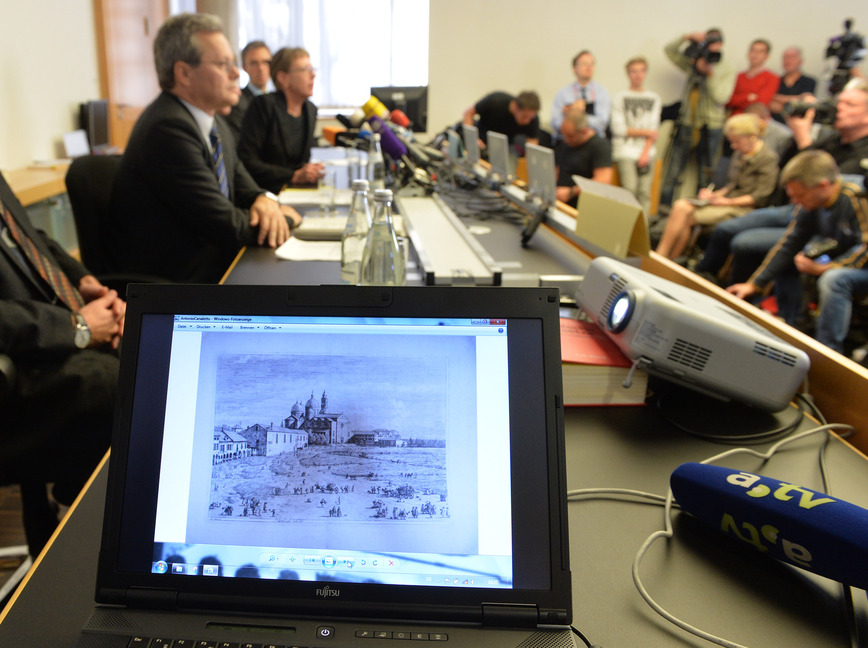AUGSBURG, Germany — It started with a routine check by German tax inspectors – and resulted in the discovery of an art hoard so vast and spectacular that no one yet knows how the story truly ends.
On a high-speed train from Zurich to Munich on Sept. 22, 2010, Germany’s briskly polite officialdom was on the lookout for customs and tax cheats. Thousands of German citizens had bank accounts in Switzerland, many of them undeclared, and the route from Zurich was a prime target for those carrying substantial sums of cash.
One elderly man on the train raised their suspicions, and prosecutors launched a preliminary tax probe against him.
Two years later, in February 2012, the trail led to the man’s apartment in a wealthy district of Munich. Once inside, inspectors found a far more glittering prize than smuggled cash or evaded taxes: a huge collection of hidden artwork that sheds new light on some of the 20th-century’s master painters and reawakens painful memories of Germany’s Nazi past.
The paintings, drawings, engravings, woodcuts and prints numbered more than 1,400 in all and were created by an all-star roster: Marc Chagall, Henri Matisse, Pablo Picasso, Pierre-Auguste Renoir, Oskar Kokoschka, and leading German artists Otto Dix, Max Liebermann and Ernst Ludwig Kirchner. At least one older work was in the trove: a 16th-century engraving of the Crucifixion by Albrecht Duerer.
Investigators’ excitement at the find was tempered by a disturbing question. At least some of the works had apparently been seized by the Nazis – so who now are their rightful owners?
Prosecutors wouldn’t identify the elderly suspect, but are probing whether he improperly acquired the works.
Heirs of the late Jewish collector Alfred Flechtheim issued a statement saying the case raised “justifiable suspicions” that some works the Nazis had taken from him might have been bought by Hildebrand Gurlitt, an art dealer who acted for the Nazis.
A Max Beckmann painting that once belonged to Flechtheim was sold two years ago through the Lempertz auction house in Cologne. A legal adviser for Lempertz, Karl-Sax Feddersen, told The Associated Press that the seller was Gurlitt’s son Cornelius.
Cornelius Gurlitt could not be reached for comment Tuesday.
The mystery turns to the art.
The 121 framed and 1,285 unframed works found in one room at the apartment were “professionally stored and in a very good condition,” said Siegfried Kloeble, head of the customs investigations office in Munich.
Investigators, aided by a leading art historian, are trying to establish the artworks’ legal status and history. So far, officials said they have done at least preliminary research on only about 500 of the pieces.
Prosecutor Reinhard Nemetz said investigators have turned up “concrete evidence” that the find includes both works that the Nazis classed as “degenerate art” and seized from German museums in 1937 or shortly after, and other works that may have been taken from individuals.
The Nazis often forced Jewish collectors to sell their art at pitifully low prices to German dealers or simply took them.
“Degenerate art” was largely modern or abstract works that Adolf Hitler’s regime believed to be a corrupt influence on the German people.
Copy the Story LinkSend questions/comments to the editors.



Success. Please wait for the page to reload. If the page does not reload within 5 seconds, please refresh the page.
Enter your email and password to access comments.
Hi, to comment on stories you must . This profile is in addition to your subscription and website login.
Already have a commenting profile? .
Invalid username/password.
Please check your email to confirm and complete your registration.
Only subscribers are eligible to post comments. Please subscribe or login first for digital access. Here’s why.
Use the form below to reset your password. When you've submitted your account email, we will send an email with a reset code.